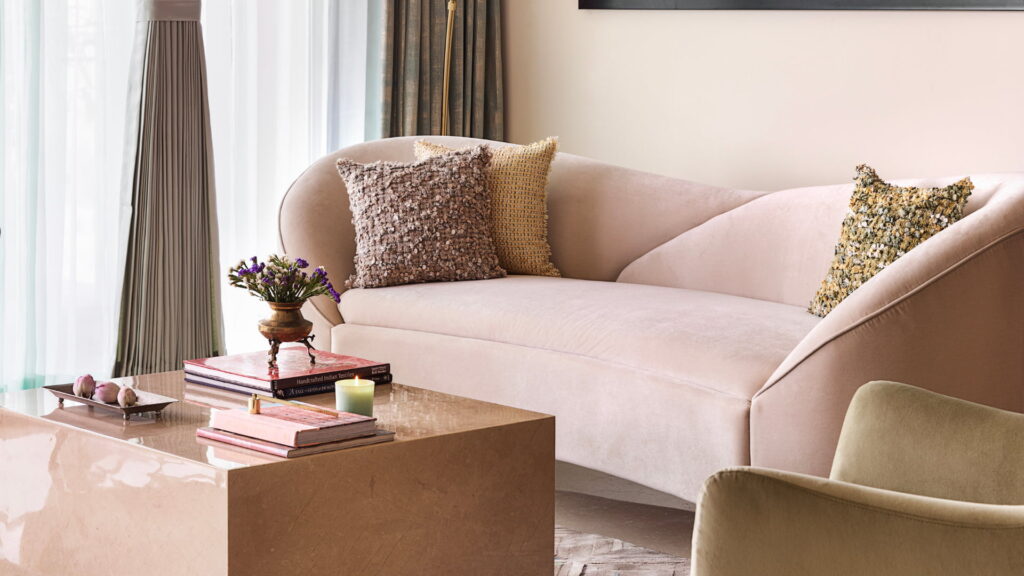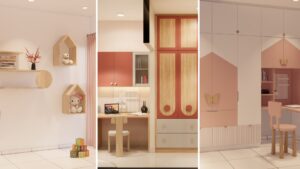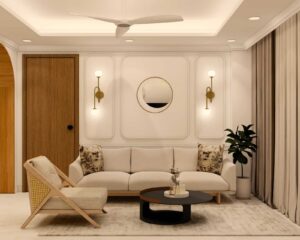The longstanding belief that white is the sole colour capable of conveying cleanliness and freshness is a myth that has dominated Interior Design for decades. While white certainly has its merits, there exists a vast palette of colours that can impart a sense of cleanliness and tranquillity to a space. In this blog post, we will challenge the myth that white reigns supreme in creating a fresh look and explore alternative colours that can achieve the same effect.

The Allure of White
White has long been associated with cleanliness, simplicity, and a timeless aesthetic. Its ability to reflect light creates an illusion of spaciousness, making it a popular choice for smaller rooms or spaces with limited natural light. However, the exclusive reliance on white as the go-to “clean” colour has limited the exploration of other hues that can offer a similarly refreshing ambience.
Debunking the Myth: Alternative Colors for a Clean Look

Soft Blues and Greens
Soft blues and greens evoke a sense of serenity and tranquillity, making them ideal for creating a clean and calm atmosphere. These colours are reminiscent of clear skies and lush landscapes, imparting a refreshing and revitalizing feel to any space. Consider using muted shades like seafoam green or powder blue for a subtle yet effective touch.
Earth Tones: Browns and Beiges
Earth tones, such as various shades of brown and beige, bring warmth and a natural element to a room. Contrary to the misconception that these colours may look dull or heavy, they create a cosy and inviting atmosphere. Opt for lighter tones like taupe or sandy beige to maintain a sense of cleanliness while adding depth to the design.
Soft Grays
Soft grey tones are versatile and sophisticated, offering a modern alternative to stark white. Light greys can provide a neutral backdrop that complements various accent colours, creating a clean and contemporary look. Gray is particularly effective in balancing other vibrant hues while still exuding a sense of tranquillity.
Muted Pastels
Muted pastel shades, such as blush pink, lavender, or soft peach, can infuse a space with a delicate and calming energy. These colours bring a touch of femininity without sacrificing the cleanliness associated with lighter tones. Muted pastels work well in bedrooms, bathrooms, or any area where a serene ambience is desired.
Cool Neutrals: Slate and Charcoal
Darker neutrals, like slate grey and charcoal, can challenge the notion that only light colours can convey cleanliness. When used strategically and paired with lighter elements, these hues can create a sophisticated and elegant look while maintaining a sense of freshness. Consider using dark neutrals as accent walls or in furniture to add depth to the overall design.
Practical Tips for Incorporating Alternative Colors

Balance is Key:
When working with alternative colours, it’s crucial to strike a balance. Combining lighter and darker shades can prevent a space from feeling too overwhelming or monotonous.
Use Accents Wisely:
Incorporate alternative colours through accents such as throw pillows, artwork, or small decorative items. This allows for experimentation without committing to a full-color overhaul.
Consider Natural Light:
The amount of natural light in a space can impact how colours are perceived. In rooms with ample sunlight, darker colours may work well without diminishing the sense of cleanliness.
Texture and Pattern:
Introduce texture and pattern to add visual interest and prevent a space from feeling flat. This is especially important when working with a more subdued colour palette.
In conclusion, the myth that white is the only colour capable of creating a clean and fresh look is ready to be debunked. Alternative colours, when chosen thoughtfully and applied strategically, can convey cleanliness and tranquillity just as effectively as white. By exploring soft blues and greens, earth tones, soft greys, muted pastels, and cool neutrals, you can infuse your space with a unique and refreshing ambience. Embrace the versatility of Colour in Interior Design and break free from the limitations of this pervasive myth. Your home deserves a palette as diverse as your style preferences, so dare to explore beyond the confines of white for a truly personalised space.


